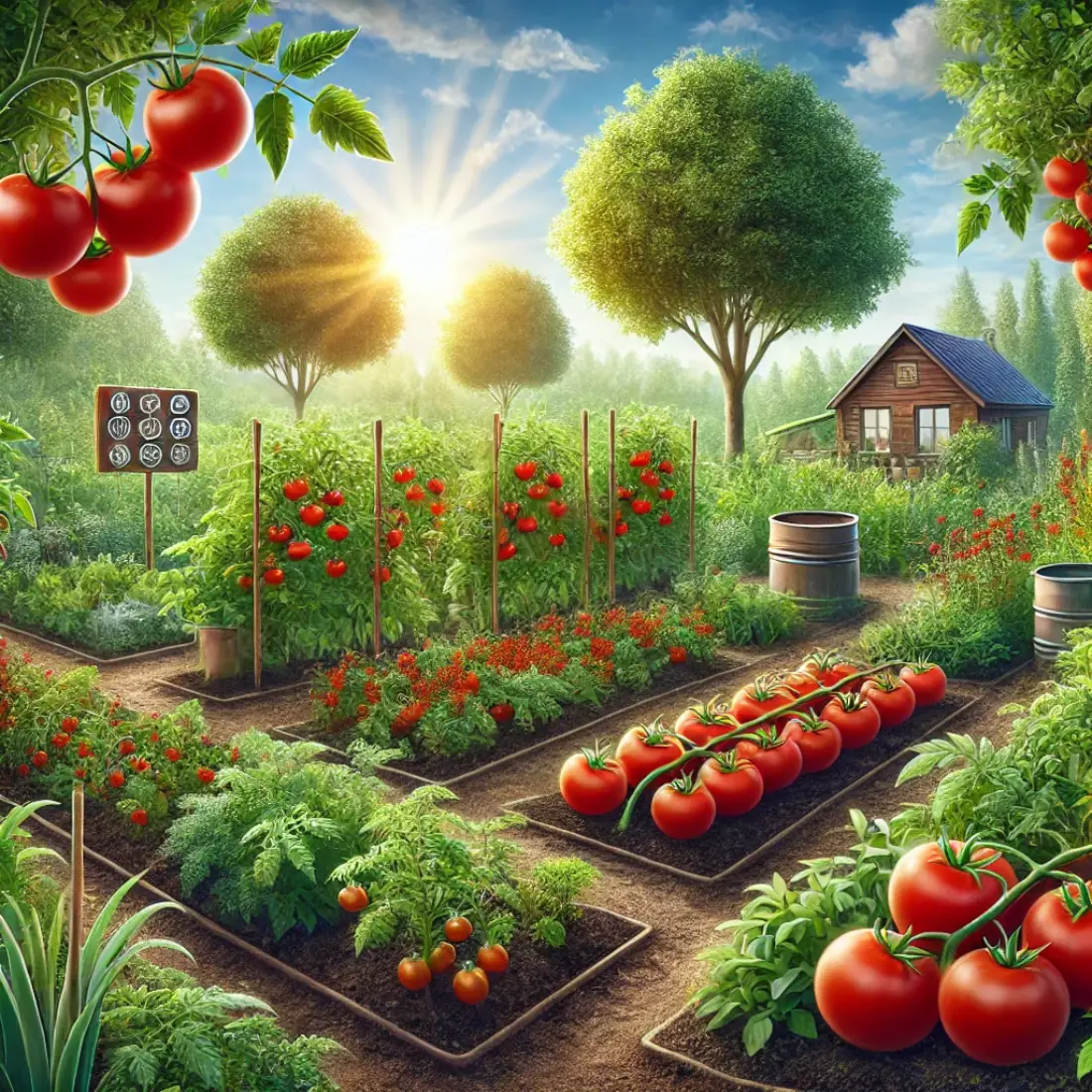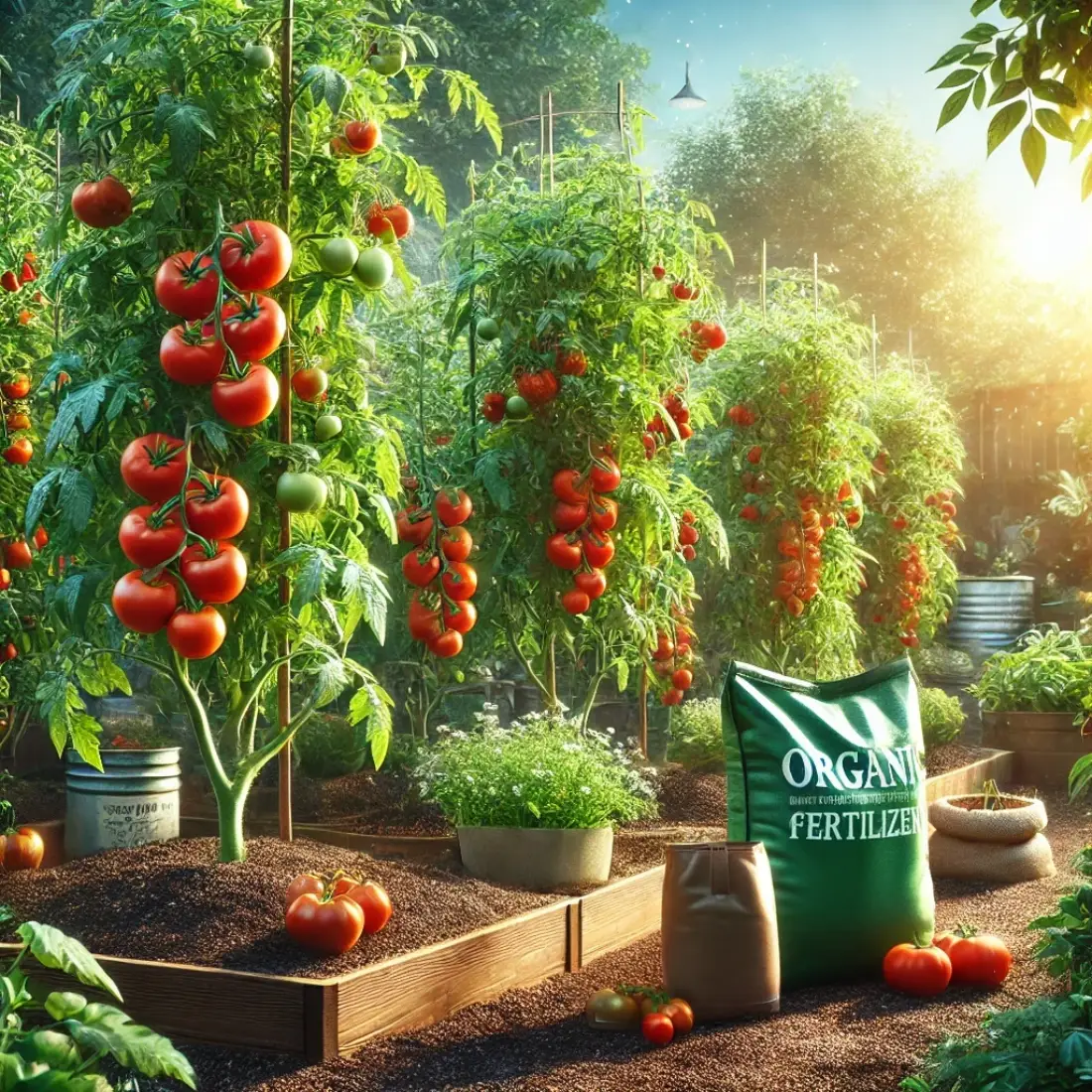Saving tomato seeds organically is an excellent way to ensure the sustainability and integrity of your garden. Not only does this practice allow you to preserve your favorite heirloom varieties, but it also ensures that your future plants are free from chemical contamination.
- Ensures Organic Integrity: Saving tomato seeds organically helps maintain the purity of your plants, free from chemical contamination.
- Cost-Saving: By saving seeds from your current plants, you reduce the need to purchase new seeds each season, saving money in the long run.
- Preserves Unique Heirloom Varieties: Keeping seeds from heirloom tomatoes allows you to continue growing and enjoying rare and unique varieties that might not be available commercially.
- Promotes Sustainable Gardening: Organic seed saving contributes to a sustainable gardening practice, reducing waste and encouraging biodiversity.
- Enhances Seed Resilience: Over time, seeds saved from plants that thrive in your specific garden conditions become more resilient and better adapted to your local environment.
Step-by-Step Guide to Saving Tomato Seeds Organically
Selecting Healthy, Ripe Tomatoes
Start by choosing the healthiest and ripest tomatoes from your garden. Look for tomatoes that are free from disease, blemishes, and deformities, as these will yield the best seeds. Heirloom and open-pollinated varieties are ideal for seed saving because they produce seeds that grow true to type, maintaining the characteristics of the parent plant.
Heirloom and open-pollinated tomatoes are vital for organic seed saving because they are genetically stable and produce plants identical to the parent. Avoid hybrid varieties if you want consistency in your future crops, as hybrids may not breed true.
Scoop Out Seeds and Gel
Cut the chosen tomatoes in half and scoop out the seeds along with the surrounding gel into a clean container. The gel contains growth inhibitors that must be removed for successful germination.
Fermentation Process to Remove the Gel
Fermentation is crucial for breaking down the gel and eliminating any disease-causing organisms.
Adding Water and Letting it Sit: Add an equal amount of water to the container with the seeds and gel. Stir the mixture and cover it loosely to allow air circulation. Let it sit at room temperature for 2-4 days. During this time, the mixture will begin to ferment.
Monitoring and Stirring: Check the mixture daily and stir it to help break down the gel. A layer of mold will likely form on the surface; this is normal. Once the seeds sink to the bottom and the gel has broken down, the fermentation process is complete.
Cleaning and Drying the Seeds
Rinsing the Seeds: Pour off the mold and floating debris carefully, retaining the viable seeds at the bottom. Rinse the seeds thoroughly in a fine-mesh sieve under running water to remove any remaining residue.
Drying Methods: Spread the rinsed seeds in a single layer on a paper towel, coffee filter, or a clean, dry surface. Allow the seeds to air dry in a warm, well-ventilated area for about a week. Stir them occasionally to ensure even drying and prevent clumping.
Storing Seeds in a Cool, Dry Place: Once the seeds are completely dry, store them in a labeled envelope, glass jar, or airtight container. Keep them in a cool, dark, and dry place to maintain their viability. Properly stored tomato seeds can remain viable for 4-6 years.
Before planting your saved seeds, it’s a good idea to test their viability. Place a few seeds on a damp paper towel, fold it, and place it in a plastic bag. Keep the bag in a warm place and check for germination after a week. Viable seeds will sprout, indicating they are ready for planting.
Tips for Successful Seed Saving
Proper Timing
- Harvest Ripe Seeds: Ensure that the fruits are fully ripe before harvesting seeds. Overripe fruits are often the best source of mature seeds.
- Avoid Early Harvest: Seeds from immature fruits may not be fully developed and can result in poor germination rates.
Effective Fermentation
- Use Clean Containers: Prevent contamination by using clean, sanitized containers for fermentation.
- Monitor Fermentation Closely: Keep an eye on the fermentation process. It should last 2-4 days, during which you should stir the mixture daily to prevent excessive mold growth.
Proper Storage
- Use Airtight Containers: Store seeds in airtight containers to protect them from moisture and pests. Glass jars, plastic containers, or vacuum-sealed bags work well.
- Keep Cool and Dark: Store seeds in a cool, dark place to prolong their viability. A refrigerator or a dark basement is ideal. Label your containers with the date and variety for easy identification.
- Monitor Storage Conditions: Check your stored seeds periodically to ensure they remain dry and in good condition. Replace desiccants if needed to maintain low humidity levels.
Avoid Cross-Pollination
- Isolate Different Varieties: To maintain genetic purity, isolate different tomato varieties by distance or use physical barriers like mesh bags to prevent cross-pollination.
- Practice Hand Pollination: In controlled environments, hand pollination can ensure that only desired traits are passed on.
Save Seeds from Multiple Plants
- Diversity is Key: Save seeds from multiple plants to maintain genetic diversity. This practice helps ensure a robust and resilient future crop.
- Avoid Saving Seeds from a Single Plant: This can lead to inbreeding and reduced vigor in future generations.
Troubleshooting Common Problems
Mold and Fermentation Issues
- Cause: Mold is a natural part of the fermentation process, but excessive growth can indicate poor conditions.
- Solution: Ensure the fermentation container is loosely covered to allow airflow. Stir the mixture daily. If mold becomes too thick, add a small amount of water to dilute it and prevent it from suffocating the seeds.
Foul Odor
- Cause: A foul odor during fermentation usually indicates the presence of unwanted bacteria.
- Solution: Make sure to clean and sanitize the container before use. Use fresh, non-chlorinated water, and avoid over-fermenting the seeds. The process should not take longer than 4 days. Rinse the seeds thoroughly once fermentation is complete.
Poor Germination Rates
- Cause: Seeds that are not dried properly can develop mold or rot during storage.
- Solution: Spread seeds in a single layer on a paper towel or screen in a well-ventilated area. Stir them occasionally to ensure even drying. Make sure seeds are completely dry before storing them.
Improper Storage Conditions
- Cause: Exposure to moisture, heat, or light can reduce seed viability.
- Solution: Store seeds in airtight containers in a cool, dark, and dry place. Use desiccants like silica gel packets to maintain low humidity levels inside the container.
Contamination
- Cause: Seeds from cross-pollinated plants may not breed true, resulting in unexpected plant characteristics.
- Solution: Isolate different tomato varieties by distance or use physical barriers such as mesh bags. Hand pollination can also ensure that only the desired traits are passed on.
Disease Transfer
- Cause: Saving seeds from diseased plants can spread pathogens to the next generation.
- Solution: Always select seeds from healthy plants. Clean and sanitize all tools and containers used in the seed-saving process. Fermentation helps kill off some pathogens, but proper cleaning and drying are essential. (100 words)
Physical Damage
- Cause: Handling seeds roughly during the cleaning and drying process can damage them.
- Solution: Handle seeds gently during extraction and cleaning. Use fine-mesh sieves and soft materials to prevent crushing. Ensure seeds are spread out evenly during drying to avoid piling and pressure damage. (100 words)
Inconsistent Results
- Cause: Seeds saved from hybrid tomatoes may produce plants with variable characteristics.
- Solution: Save seeds from open-pollinated or heirloom varieties to ensure consistent results. If you must save seeds from hybrids, be prepared for variability and select the best-performing plants over several generations to stabilize the traits.
FAQs about Saving Tomato Seeds Organically
How long can tomato seeds be stored?
Tomato seeds can be stored for up to 4-6 years if kept in optimal conditions—cool, dark, and dry. Using airtight containers and desiccants helps extend their viability.
Can I save seeds from store-bought tomatoes?
While it’s possible, store-bought tomatoes are often hybrids and may not produce plants true to type. For the best results, save seeds from heirloom or open-pollinated varieties.
What are the signs of viable seeds?
Viable seeds are usually plump, firm, and have a uniform color. Conducting a germination test before planting can confirm their viability.
How many seeds should I save?
It’s wise to save more seeds than you need, considering that not all seeds will germinate. Aim to save at least 20-30 seeds from each tomato variety to ensure a good planting stock.
What is the best time to save tomato seeds?
The best time to save seeds is when the tomatoes are fully ripe or even slightly overripe. This ensures the seeds are fully developed and mature.
How do I prevent cross-pollination?
To prevent cross-pollination, isolate different tomato varieties by at least 10-20 feet, use physical barriers like mesh bags, or practice hand pollination to control which plants cross-pollinate.
Can I use seeds from hybrid tomatoes?
You can save seeds from hybrid tomatoes, but be aware that they may not produce plants with the same characteristics as the parent. Hybrids often revert to the traits of their parent plants, resulting in unpredictable offspring.
Why do I need to ferment tomato seeds?
Fermentation removes the gelatinous coating around the seeds, which contains growth inhibitors. It also helps to kill off potential diseases, improving the seeds’ chances of successful germination.
How do I know if the seeds are dry enough for storage?
Seeds are dry enough when they break or shatter easily when bent. If seeds are still pliable, they need more drying time to prevent mold and decay during storage.
What should I do if my seeds don’t germinate?
If seeds don’t germinate, test a new batch for viability, ensure proper storage conditions, and verify that the planting environment meets the seeds’ needs, including adequate moisture and temperature.










